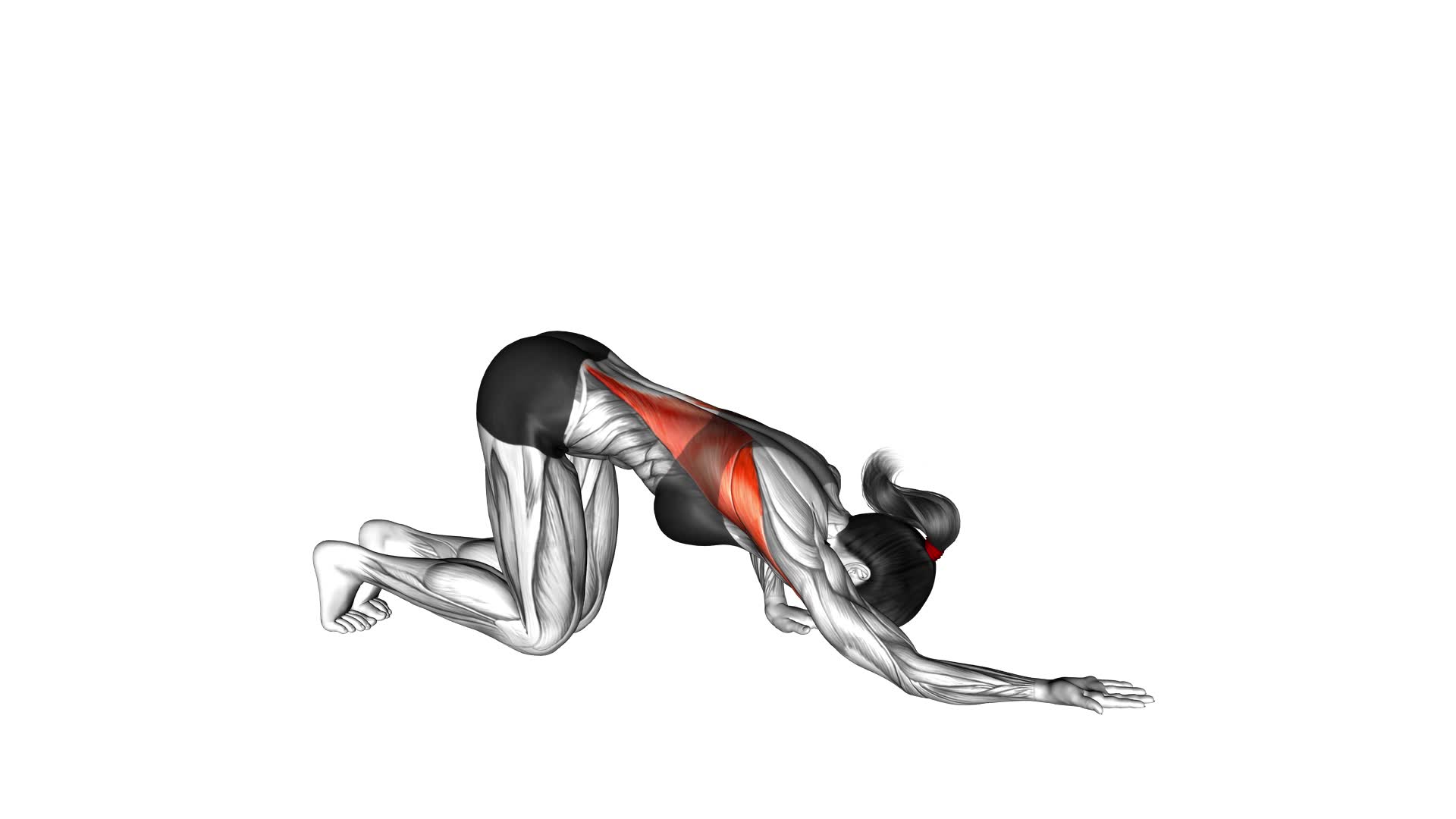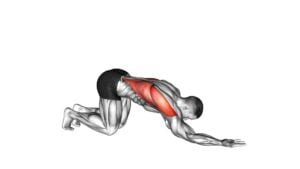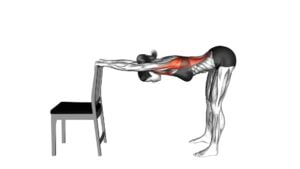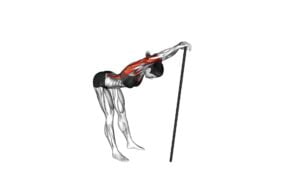Kneeling Lat Stretch (female) – Video Exercise Guide & Tips

Are you looking to improve your flexibility and strengthen your back muscles? The Kneeling Lat Stretch is a great exercise for you.
Watch This Exercise Video
In this video exercise guide, we will show you the proper form and technique to perform this stretch effectively.
Whether you're a beginner or looking for a deeper stretch, we've got you covered.
Get ready to incorporate the Kneeling Lat Stretch into your routine and reap the benefits.
Let's get started!
Key Takeaways
- Kneeling Lat Stretch improves posture and increases shoulder mobility.
- It targets and stretches the latissimus dorsi muscles and improves flexibility in the side body.
- Incorporating dynamic movements and variations can enhance the benefits of the stretch.
- Engaging the core muscles for stability and consulting a fitness professional for proper form are important precautions.
Benefits of the Kneeling Lat Stretch
To experience the benefits of the Kneeling Lat Stretch, incorporate this exercise into your routine. This stretch is a great way to improve your posture and increase shoulder mobility. By stretching your lats, or latissimus dorsi muscles, you can help counteract the effects of sitting for long periods and hunching over a computer or phone.
When your lats are tight, they can pull your shoulders forward, causing rounded shoulders and a slouched posture. The Kneeling Lat Stretch targets these muscles, helping to lengthen and loosen them. By doing this stretch regularly, you can improve your overall posture and stand taller.
Additionally, the Kneeling Lat Stretch also helps increase shoulder mobility. Tight lats can restrict your shoulder movement, making it more difficult to perform exercises that require a wide range of motion, such as overhead presses or pull-ups. By stretching your lats, you can improve your shoulder flexibility and allow for better movement and performance in these exercises.
Incorporating the Kneeling Lat Stretch into your routine can have a significant impact on your posture and shoulder mobility. Make sure to perform this stretch correctly and consistently for optimal results.
Proper Form and Technique
Maintain proper form and technique while performing the Kneeling Lat Stretch to maximize its benefits. To ensure you're getting the most out of this exercise, it's important to avoid common mistakes and make use of variations and progressions.
One common mistake to avoid is rounding your back during the stretch. This can put unnecessary strain on your spine and reduce the effectiveness of the exercise. Instead, focus on keeping your back straight and your chest lifted. Engaging your core muscles will help maintain proper alignment.
Another mistake isn't fully extending your arms overhead. When performing the Kneeling Lat Stretch, make sure to reach as high as you can while keeping your shoulders relaxed. This will help to stretch the lats and increase flexibility in your upper body.
To add more challenge to the exercise, you can incorporate variations and progressions. One variation is to use a resistance band or a yoga strap to assist with the stretch. This can help you gradually increase your range of motion.
Transitioning into the subsequent section about modifications for beginners, it's important to note that if you're new to this exercise, it's recommended to start with a modified version.
Modifications for Beginners
If you're a beginner, try a modified version of the Kneeling Lat Stretch to ease into the exercise and gradually build your flexibility and strength. Here are some beginner-friendly modifications and common mistakes to avoid:
- Use a towel or strap: If you find it difficult to reach your hands behind your back, use a towel or strap to bridge the gap. Hold onto the ends of the towel or strap with your hands and gently pull to stretch your lats.
- Reduce the range of motion: Instead of fully extending your arms overhead, start with a smaller range of motion. Keep your arms slightly bent and bring them as far back as is comfortable for you. As you become more flexible, gradually increase the range of motion.
- Support your lower back: Place a folded towel or cushion under your knees to provide support for your lower back. This can help alleviate any discomfort and prevent strain.
- Engage your core: To avoid putting excessive strain on your back, engage your core muscles throughout the exercise. This will help stabilize your spine and maintain proper form.
Tips for a Deeper Stretch
To achieve a deeper stretch in your lat muscles, there are a few techniques and advanced stretching variations that you can incorporate into your routine.
One technique is to gradually increase the duration of the stretch, holding it for a longer period of time. This allows the muscle fibers to relax and elongate, resulting in a deeper stretch.
Another technique is to use a resistance band or towel to intensify the stretch. By pulling on the band or towel while in the stretched position, you create additional tension in the lats, increasing the stretch.
Additionally, you can try incorporating advanced stretching variations such as the kneeling lat stretch with a side bend or the kneeling lat stretch with an overhead reach. These variations target different angles of the lat muscles, providing a deeper stretch and promoting overall flexibility.
Remember to listen to your body and go at your own pace when attempting these deeper stretch techniques.
Incorporating the Kneeling Lat Stretch Into Your Routine
To effectively incorporate the Kneeling Lat Stretch into your routine, consistently perform this stretch at least three times a week for optimal results. Here are some precautions and safety considerations to keep in mind when performing this stretch:
- Maintain proper form: Make sure to keep your back straight and your core engaged throughout the stretch. Avoid arching your back or rounding your shoulders.
- Start with a warm-up: Before performing the Kneeling Lat Stretch, it's essential to warm up your muscles. This can be done through light cardio exercises or dynamic stretches.
- Use props if needed: If you have difficulty reaching the floor with your hands, you can use yoga blocks or a towel to support your palms. This will help maintain proper form and prevent strain.
- Listen to your body: Pay attention to any discomfort or pain during the stretch. If you feel any sharp or intense pain, stop immediately and consult a healthcare professional.
Now, let's explore some variations and advanced techniques to further challenge your lat muscles:
- Single-arm variation: Instead of reaching both arms overhead, try reaching one arm at a time while keeping the other arm extended by your side. This will provide a deeper stretch on one side at a time.
- Weighted stretch: To increase the intensity of the stretch, hold a light dumbbell or kettlebell in your hands while performing the Kneeling Lat Stretch. This will add resistance and help build strength in your lats.
- Side bend variation: Instead of reaching straight overhead, try bending your torso to the side while performing the stretch. This will target different areas of your lats and increase flexibility in your side body.
- Dynamic stretch: Incorporate dynamic movements into the stretch by gently rocking back and forth or side to side. This will help improve mobility and release tension in your lats.
Frequently Asked Questions
How Long Should I Hold the Stretch for Optimal Results?
For optimal results, you should hold the stretch for the optimal duration. This will help improve your stretching technique and maximize the benefits of the exercise.
Remember to listen to your body and start with a comfortable duration, gradually increasing it over time. Holding the stretch for about 20-30 seconds is a good starting point. However, it's always best to consult with a fitness professional to determine the specific duration that suits your individual needs.
Can I Perform the Kneeling Lat Stretch if I Have a Pre-Existing Shoulder Injury?
Yes, you can perform the kneeling lat stretch if you have a pre-existing shoulder injury. However, it's important to modify the exercise to avoid further aggravating your injury.
Consult with a healthcare professional or a certified trainer who can provide alternative exercises or modifications specifically tailored to your condition. It's crucial to prioritize your safety and well-being while still engaging in effective stretching techniques.
Is It Normal to Feel Discomfort or Tightness in the Lats During the Stretch?
Feeling discomfort or tightness in your lats during the kneeling lat stretch isn't uncommon. It can indicate that your lats are tight and need stretching.
To relieve this tightness, focus on your breathing and try to relax into the stretch. However, if the discomfort is sharp or increases, it's important to stop and consult a professional.
Remember to avoid common mistakes like rounding your back or overstretching. Proper technique and gradual progression will ensure a safe and effective stretch.
Are There Any Alternative Stretches That Target the Same Muscle Group?
If you're looking for alternative stretches that target the same muscle group as the kneeling lat stretch, there are a few options you can try.
One option is the standing lat stretch, where you reach one arm overhead and lean to the opposite side.
Another option is the seated lat stretch, where you sit on the ground with your legs extended and reach forward to touch your toes.
These stretches can help you loosen and stretch your lats effectively.
Can the Kneeling Lat Stretch Help Improve Posture and Alleviate Back Pain?
Stretching is beneficial for improving posture and alleviating back pain. By incorporating stretching into your daily routine, you can strengthen and lengthen the muscles in your back, including the lats. This can help improve your posture and reduce the strain on your back muscles.
Additionally, stretching can increase flexibility and range of motion, which can also aid in preventing and managing back pain. Remember to maintain proper form and consult with a healthcare professional if you have any specific concerns.
Conclusion
Incorporating the kneeling lat stretch into your routine can provide numerous benefits for your upper body flexibility and posture. By following proper form and technique, you can effectively target and stretch your latissimus dorsi muscles.
Beginners can modify the stretch to fit their comfort level, while more experienced individuals can focus on achieving a deeper stretch. Make sure to incorporate this exercise regularly to enhance your overall flexibility and improve your workout performance.

Author
Years ago, the spark of my life’s passion ignited in my mind the moment I stepped into the local gym for the first time. The inaugural bead of perspiration, the initial endeavor, the very first surge of endorphins, and a sense of pride that washed over me post-workout marked the beginning of my deep-seated interest in strength sports, fitness, and sports nutrition. This very curiosity blossomed rapidly into a profound fascination, propelling me to earn a Master’s degree in Physical Education from the Academy of Physical Education in Krakow, followed by a Sports Manager diploma from the Jagiellonian University. My journey of growth led me to gain more specialized qualifications, such as being a certified personal trainer with a focus on sports dietetics, a lifeguard, and an instructor for wellness and corrective gymnastics. Theoretical knowledge paired seamlessly with practical experience, reinforcing my belief that the transformation of individuals under my guidance was also a reflection of my personal growth. This belief holds true even today. Each day, I strive to push the boundaries and explore new realms. These realms gently elevate me to greater heights. The unique combination of passion for my field and the continuous quest for growth fuels my drive to break new ground.







